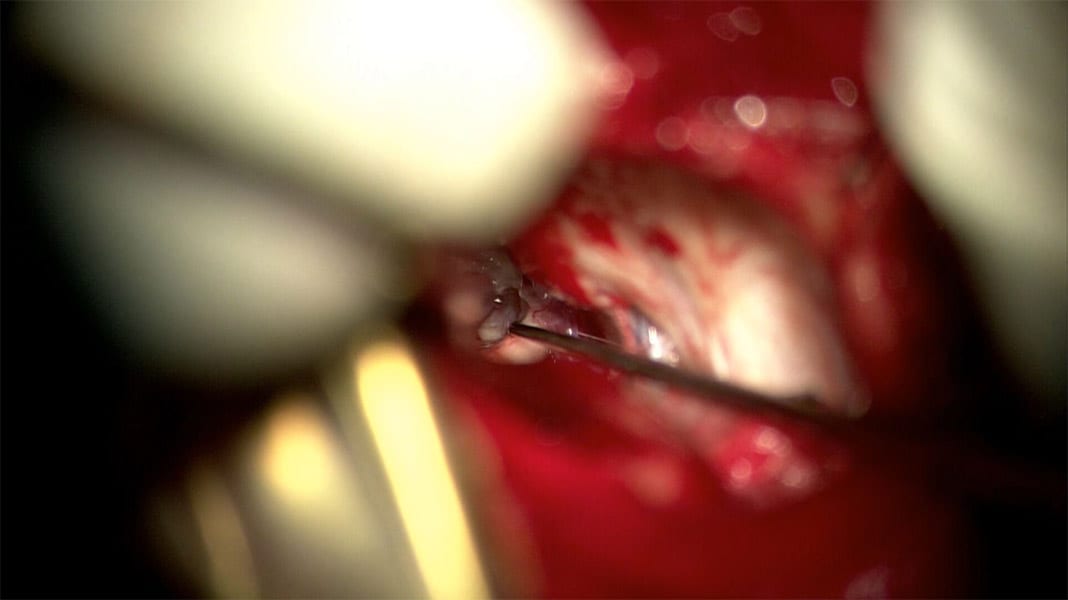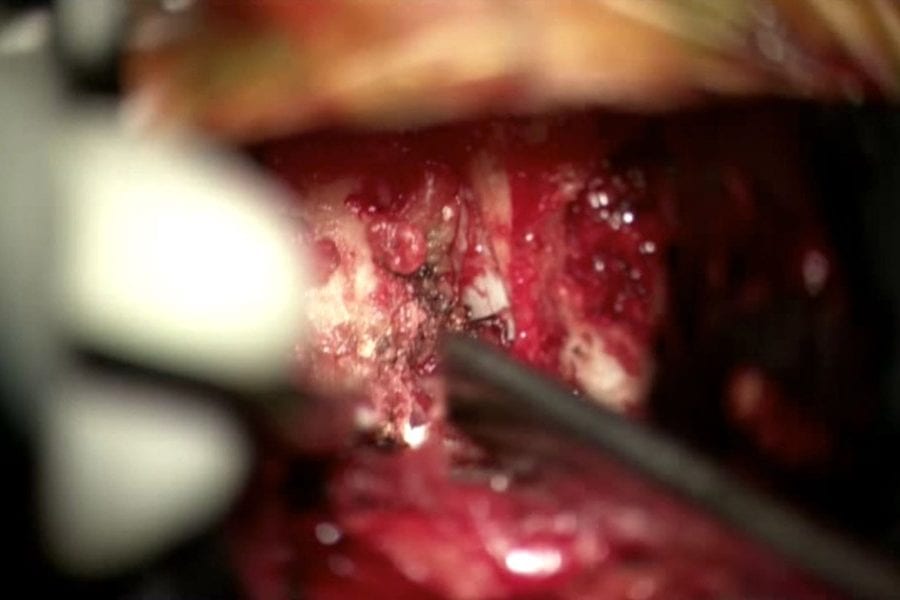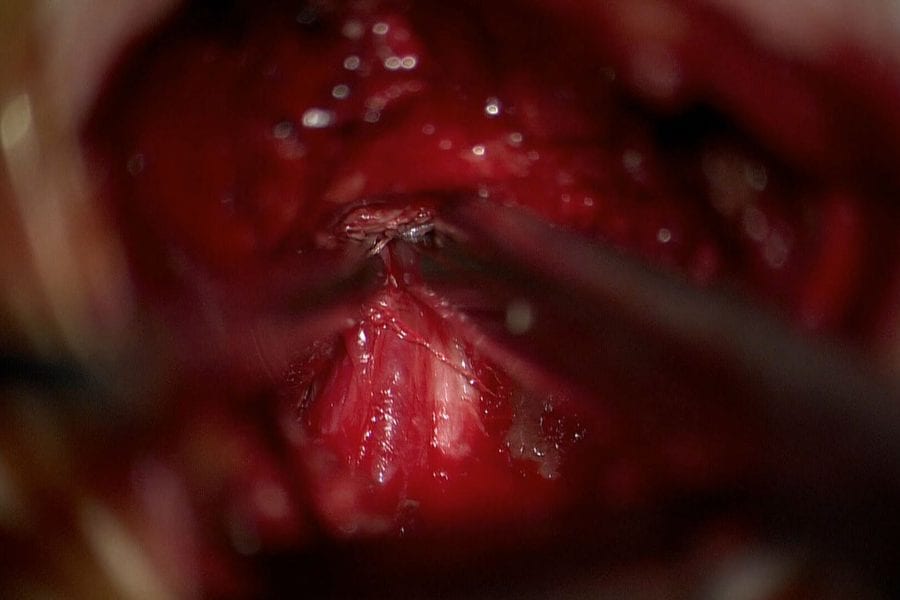This patient with Trigeminal Neuralgia had surgery in 2012 by another surgeon at another institution. Initially, she felt well, but the pain gradually returned over several years. This is a short video is of her repeat surgery, cut down from 1 hour to 3 mins.
The first picture is the trigeminal nerve as it is supposed to look.
The remainder of the video shows finding the Teflon pledges used at the time of the 2012 operation stuck to the nerve, and the process of gently dissecting them off the nerve. In this patient, the pain was caused by the Teflon pledgets left at the time of the initial surgery, which is very uncommon.
The patient woke up from surgery pain-free, and 12 months later remains pain-free and very happy with her outcome.
Trigeminal neuralgia is a chronic pain disorder that affects the trigeminal nerve. The typical form results in episodes of severe, sudden, shock-like pain in one side of the face that lasts for seconds to a few minutes. Groups of these episodes can occur over a few hours. The atypical form results in a constant burning pain that is less severe. Episodes may be triggered by touching the face, wind, brushing teeth, combing hair etc. Both forms may occur in the same person.
Trigeminal neuralgia is one of the most painful conditions that exist and often results in depression and suicides have been reported.
It is estimated that 1 in 8,000 people per year develops trigeminal neuralgia. It usually begins in people over 50 years old, but can occur at any age. Women are more commonly affected than men.
The cause of trigeminal neuralgia is often compression from an artery as the nerve exits the brain stem. Surgery is aimed at carefully moving the offending blood vessel off the nerve and place a Teflon pledget between the artery and the nerve relieving the pressure off the nerve.





